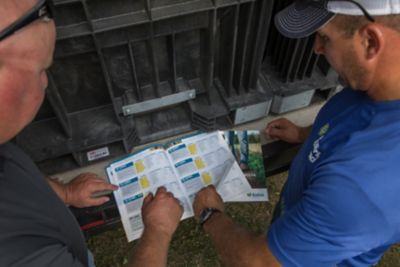Field planning is essential to maximize the use of the herbicide trait system you’re planting. Get expert field planning advice from Enlist® experts to maximize your acres.
Tech Topics — Field Planning

Planning Helps Maximize Success With the Enlist Weed Control System
Field planning means being aware of your surroundings. Dan Puck of Corteva Agriscience explains how understanding where compatible and susceptible crops are helps you make successful herbicide applications when growing Enlist® crops.

Know What Neighbors Are Planting Next Year
When selecting seed for next spring, farmers need to take into consideration which herbicide trait technologies they want to use and where they want to place those technologies. Knowing the surroundings can help them make better use of these technologies.
Learn moreGet the Facts on Field Planning
Using field planning to understand where compatible and susceptible crops are helps you make successful herbicide applications when growing crops with an Enlist® trait. Learn more from Enlist experts.
Can’t Tolerate Weeds? Put Residuals to Work in a Program Approach
If you maintain a zero-tolerance policy for weeds, adopt a program approach that takes advantage of residual herbicides. That process starts before the seed goes into the ground.
Be Prepared: Be Aware of Surroundings to Use Herbicide Traits Successfully
Farmers who know which nearby fields contain compatible and susceptible crops can maximize the benefits of their herbicide trait technologies, including the Enlist® weed control system. Find out why it’s important to read and understand label requirements and make plans concerning crop placement.
Know What Neighbors Are Planting to Get the Most From Enlist® Technology
When selecting seed, farmers need to take into consideration which herbicide trait technologies they want to use and where they want to place those technologies. Knowing the surroundings can help them make better use of these technologies.
Cotton Variety Selection and Field Planning Help Optimize Applications
Farmers must consider many factors in placing new technologies on their operations. With strategic field planning, farmers can place herbicide trait technologies so they can be more successful using the systems’ weed control components.